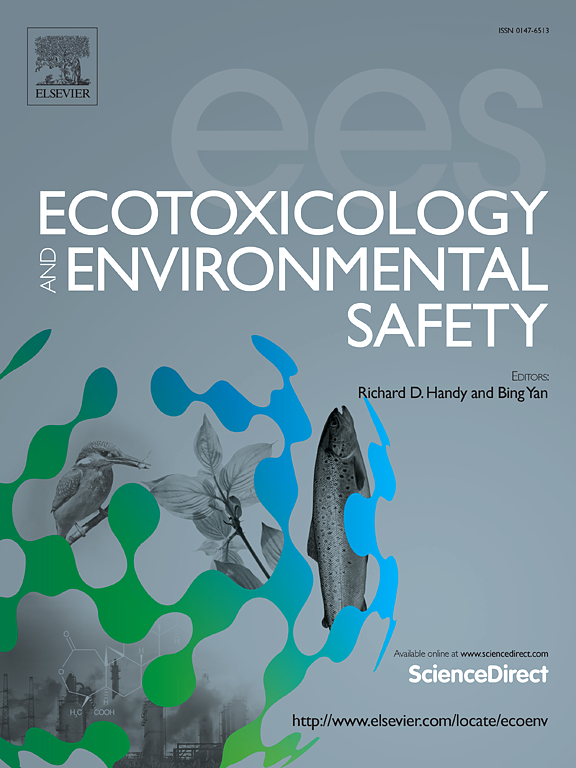Multigenerational effects of cultivating transgenic maize straw on earthworms: A combined laboratory and field experiment
IF 6.2
2区 环境科学与生态学
Q1 ENVIRONMENTAL SCIENCES
引用次数: 0
Abstract
The cultivation of genetically modified (GM) maize has aroused notable public concern related to the potential risks to soil fauna caused by the release of foreign proteins. In this study, the potential effects of cultivating the GM maize variety DBN9936, which exhibits the expression of the Cry1Ab and EPSPS proteins, on earthworms (Eisenia fetida) were evaluated under laboratory and field conditions. No significant differences in the survival, body weight, cocoon production, or hatching of earthworms fed GM or non-GM DBN318 maize were detected after three consecutive generations in a laboratory test. The enzymatic activity assay results revealed no significant differences in superoxide dismutase (SOD) or catalase (CAT) enzyme activity between the GM and non-GM maize varieties. Furthermore, exogenous Cry1Ab and EPSPS proteins were undetectable in the gut tissues of earthworms raised with GM maize straw. GM maize cultivation imposed no adverse effects on the species composition or density of soil earthworms in the two consecutive years during the field test, and the soil earthworm species, total number of earthworms and density of each earthworm species did not significantly differ between the GM maize and non-GM maize lines. On the basis of our findings, we concluded that the cultivation of the GM maize variety DBN9936 does not pose a risk to earthworms.
求助全文
约1分钟内获得全文
求助全文
来源期刊
CiteScore
12.10
自引率
5.90%
发文量
1234
审稿时长
88 days
期刊介绍:
Ecotoxicology and Environmental Safety is a multi-disciplinary journal that focuses on understanding the exposure and effects of environmental contamination on organisms including human health. The scope of the journal covers three main themes. The topics within these themes, indicated below, include (but are not limited to) the following: Ecotoxicology、Environmental Chemistry、Environmental Safety etc.

 求助内容:
求助内容: 应助结果提醒方式:
应助结果提醒方式:


